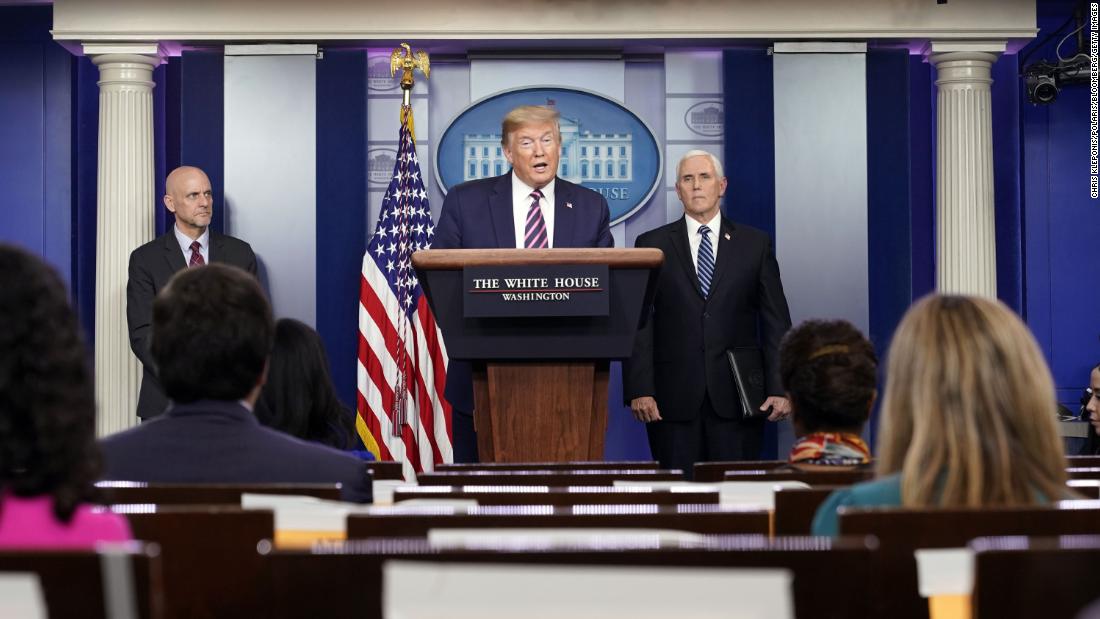Many close to the President believe the events hurt him more than they help him, with Thursday’s episode being the prime example
Friday’s coronavirus task force news briefing was the shortest since the pandemic began, clocking in at 22 minutes. Trump had also taken questions from the press while signing a coronavirus relief spending bill earlier in the day. The previous shortest briefing was 32 minutes.
“I see the disinfectant — where it knocks it out in a minute, one minute. And is there a way we can do something like that, by injection inside or almost a cleaning?” Trump asked White House coronavirus task force coordinator Dr. Deborah Birx during Thursday’s briefing.
Many close to him believe the daily briefings hurt him more than they help him, with Thursday’s episode being the prime example. The White House spent the last 24 hours attempting to clean up remarks from the President that researchers should look into injecting people with disinfectant or ultraviolet rays to cure coronavirus.
One White House official said they asked the President to stop conducting the daily briefings last week but he resisted. Another ally told CNN that this concern is not new among those close to him.
And a separate Trump ally told CNN that Thursday’s briefing is exactly what they were worried about when they begged him not to have such long and freewheeling press conferences — that one day he would just say something completely off the wall and off the rails.
Some White House aides also view an eventual phasing-out of the briefings as a sign from Washington to the country that life is slowing returning to normal. They see the briefings as a set-piece of the crisis era, which Trump is desperate to see end.
Trump has tacitly acknowledged his briefings have become substitutes for the political rallies he’s forgone because of the outbreak. In private, Trump has itched for a return of rallies or at least some type of event out in the country to break up the monotony of the daily briefings. Pence has visited manufacturing plants, something Trump has told aides he’d also like to do soon.
He said last week that walking into the briefing room — where reporters are spread apart and only a few technicians are allowed to operate cameras — isn’t the same.
“I’m looking at this room and I see all this — it loses a lot of flavor,” he said. “It loses, to me, a lot of flavor.”
Just before Friday’s briefing, the White House attempted to remove CNN’s reporter covering the briefing from her assigned seat. The White House Correspondents’ Association makes seat assignments for the briefings, as it has for decades, and the White House does not have input into the seating arrangement.
The source close to the task force said questions have been raised internally about who gets to sit where in the briefing room. There are also questions about who gets to decide the social distancing seating arrangement, and whether the White House or the White House Correspondents’ Association should decide seating arrangements.
581 total views


